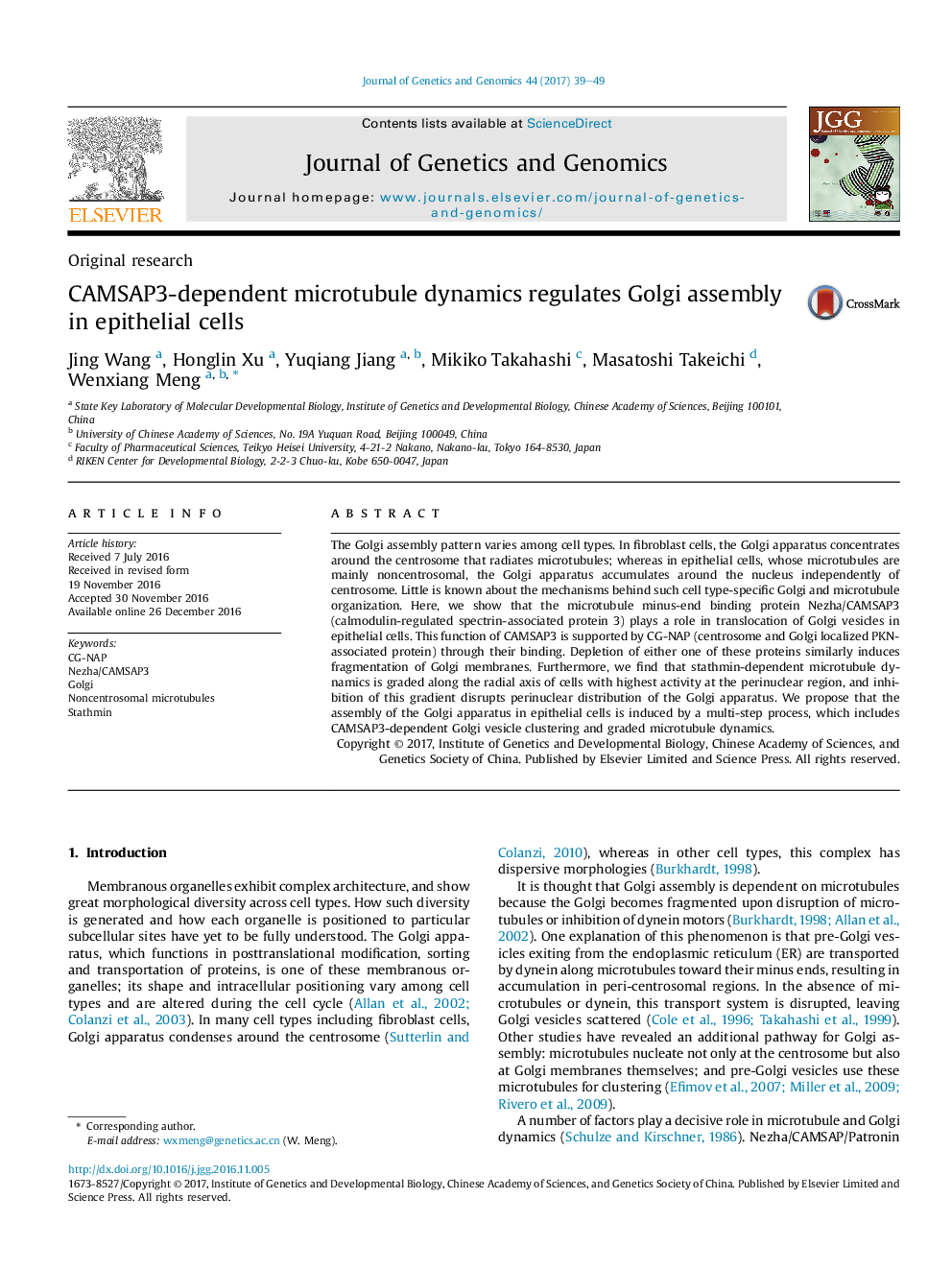| Article ID | Journal | Published Year | Pages | File Type |
|---|---|---|---|---|
| 5585930 | Journal of Genetics and Genomics | 2017 | 11 Pages |
The Golgi assembly pattern varies among cell types. In fibroblast cells, the Golgi apparatus concentrates around the centrosome that radiates microtubules; whereas in epithelial cells, whose microtubules are mainly noncentrosomal, the Golgi apparatus accumulates around the nucleus independently of centrosome. Little is known about the mechanisms behind such cell type-specific Golgi and microtubule organization. Here, we show that the microtubule minus-end binding protein Nezha/CAMSAP3 (calmodulin-regulated spectrin-associated protein 3) plays a role in translocation of Golgi vesicles in epithelial cells. This function of CAMSAP3 is supported by CG-NAP (centrosome and Golgi localized PKN-associated protein) through their binding. Depletion of either one of these proteins similarly induces fragmentation of Golgi membranes. Furthermore, we find that stathmin-dependent microtubule dynamics is graded along the radial axis of cells with highest activity at the perinuclear region, and inhibition of this gradient disrupts perinuclear distribution of the Golgi apparatus. We propose that the assembly of the Golgi apparatus in epithelial cells is induced by a multi-step process, which includes CAMSAP3-dependent Golgi vesicle clustering and graded microtubule dynamics.
